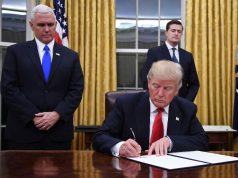China’s economic growth slowed to 6.2 per cent in the second quarter, its weakest pace in at least 27 years, in the face of mounting US trade pressure.
While more upbeat June factory output and retail sales offered signs of improvement, some analysts cautioned the gains may not be sustainable, and expect Beijing will continue to roll out more support measures in coming months, China News Asia has reported.
 China’s trading partners and financial markets are closely watching the health of the world’s second-largest economy as the Sino-US trade war gets longer and costlier, fuelling worries of a global recession, the report says.
China’s trading partners and financial markets are closely watching the health of the world’s second-largest economy as the Sino-US trade war gets longer and costlier, fuelling worries of a global recession, the report says.
Some analysts say that Monday’s growth data marked a loss of momentum for the economy from the first quarter’s 6.4 per cent, amid expectations that Beijing needs to do more to boost consumption and investment and restore business confidence.
The April-June pace was in line with analysts’ expectations for the slowest since the first quarter of 1992, the earliest quarterly data on record.
“China’s growth could slow to 6 per cent to 6.1 per cent in the second half,” said Nie Wen, an economist at Hwabao Trust, as quoted by CNA. That would test the lower end of Beijing’s 2019 target range of 6 to 6.5 per cent.
Cutting banks’ reserve requirement ratios (RRR) “is still very likely as the authorities want to support the real economy in a long run,” he said, predicting the economy would continue to slow before stabilising around mid-2020.
China has already slashed RRR six times already since early 2018 to free up more funds for lending and analysts polled by Reuters forecast two more cuts this quarter and next.
Beijing has depended heavily on fiscal stimulus to underpin growth this year, announcing massive tax cuts worth nearly 2 trillion yuan (US$291 billion) and a quota of 2.15 trillion yuan for special bond issuance by local governments aimed at boosting infrastructure construction.
The economy has been slow to respond, however, and business sentiment remains cautious.




































